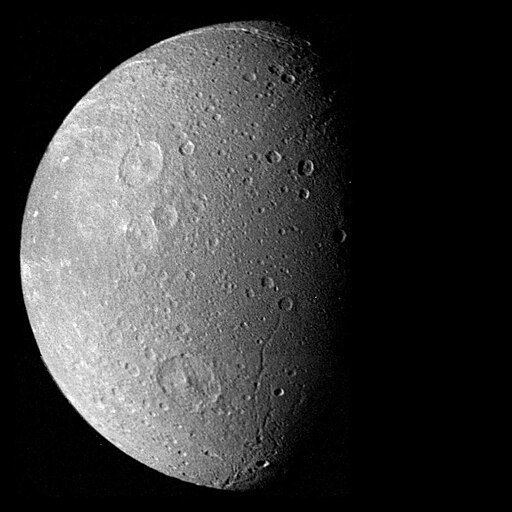I was looking toward sunset and noticed a bright object in the sky near the sun. I wasn't sure what it was, so I used Stellarium to check on the identity of the object. It turned out that there were several moons (not of earth, but apparently of Jupiter) in that area, the largest of which by far was the giant moon Dione.

Even in my dream that didn't make much sense to me, and as I drifted back and forth from sleeping-nearly-waking to waking-nearly-sleeping, the following occurred to me in about this order:
- Dione is not really a giant moon.
- It is a moon of Saturn, not Jupiter.
- For such a small object, it is much too far away to be a bright object in our night sky.
- It is probably beyond the diffraction limit of the human eye to resolve Dione from Saturn.
I have no idea what brought this on, but having astronomy in my dreams has been fairly typical since I took an intro astronomy course from the local community college when I was in 10th grade.
At least this time I realized there was something wrong even when I was in the dream. What can be more disturbing is when elements from a dream seem to make sense even after waking.
By the way, Stellarium shows that Saturn is now close to Spica, the 1st magnitude star in Virgo, visible in the southeast during the evening. Dione currently has a magnitude of 10.92 -- far, far below the threshold of human vision. It would require a pretty good telescope to see Dione.
ReplyDeleteThe angular distance between Dione and Saturn is arctan(377,396 km / 1,332,092,744 km)= 0.01623 degrees. If we take the maximum size of a dark-adapted pupil to be 0.9 cm and use green light at a wavelength of 510 nm, the diffraction-limited resolution is 0.00396, so the diffraction limit is not really what prevents us from seeing Dione. The problem is instead that it is too faint and would at any rate be lost in the glare of Saturn.